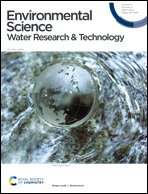Sustainably closed loop recycling of hierarchically porous polymer microbeads for efficient removal of cationic dyes†
Abstract
Herein, we designed and fabricated a hierarchically porous crosslinked polymeric microbead (PCP) with high density of functional groups for selective adsorption of cationic dyes from water. On account of its high surface area with hierarchical porosity, exceptional stability and pH-tunable affinity to cationic dyes, the as-prepared PCP can perform as a selective adsorbent to efficiently remove cationic dyes in the pH range of 4–10. In 15 min, it can effectively reduce the concentration of methylene blue in water from 100 mg L−1 to 0.2 mg L−1. Meanwhile, it achieves high equilibrium adsorption capacities of over 300 mg L−1 to different cationic dyes, which are comparable to those of most reported porous materials. In addition, the PCP adsorbent is highly recyclable. After 50 cycles, it still achieves 96.69% removal efficiency for methylene blue. Most importantly, a closed loop recycling system is integrated by combining filtration and solvent evaporation technologies, which can effectively recover the spent PCP, the dyes and the eluent, generating no secondary effluent. This work provides great insights into how to develop porous polymeric materials from commercial chemicals to serve as sustainable adsorbents to tackle the existing wastewater pollution caused by cationic dyes.



 Please wait while we load your content...
Please wait while we load your content...